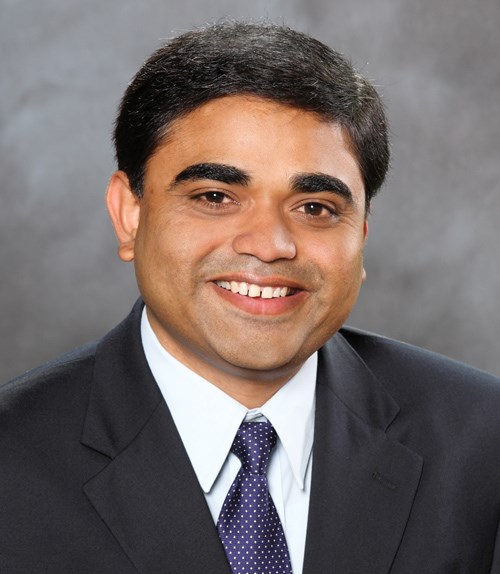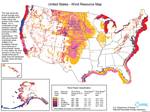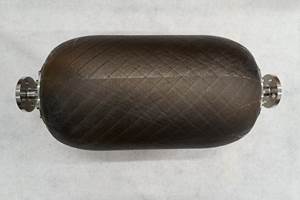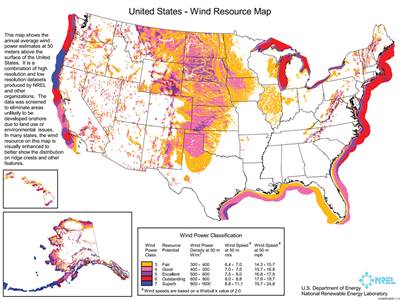What is carbon fiber's place in wind energy systems?
CW Conferences director Scott Stephenson shares insights fro the recent 2011 Carbon Fiber conference (Dec. 5-7, 2011, in Washington, D.C.) presented by Nirav Patel, senior lead engineer of GE Energy-Manufacturing Technology (Greenville, S.C.).
You don’t have to study the carbon fiber manufacturing market for very long to learn a few basic tenets. The first is that the aerospace market was, is and will continue to be critical to the market’s growth and maturation. The second is that in the wind energy market, even by conservative estimates, carbon fiber consumption is poised to dwarf aerospace consumption over the next 10 years.
The reason for this is scale. Larger turbines with longer blades are more efficient (see “Learn More,” below). However, as wind blades get longer, weight plays an increasingly negative role in turbine efficiency. Reducing weight while maintaining strength and stiffness is paramount, if efficiency is to be optimized. Accordingly, some blade structures that are typically molded of glass fiber composites, such as spar caps, are being converted to carbon fiber to take out weight. There are, however, challenges fundamental to carbon fiber supply that discourage the application of carbon fiber in wind blades. The biggest two are consistency of fiber supply and — no surprise to composites industry professionals — fiber cost.
Highlighting these challenges at the 2011 Carbon Fiber conference (Dec. 5-7, 2011, in Washington, D.C.) was Nirav Patel, senior lead engineer of GE Energy-Manufacturing Technology (Greenville, S.C.). Patel’s insights are significant because GE Energy is the largest wind turbine supplier in the U.S. What GE Energy does with carbon fiber is sure to have a significant impact on the overall supply of carbon fiber to the composites industry.
Patel reported that GE Energy currently uses large-tow (≥24K), standard-modulus carbon fiber, supplied by Mitsubishi Rayon Co. Ltd. (Tokyo, Japan) and Zoltek Inc. (St. Louis, Mo.), in unspecified primary structures on next-generation 48.7m/160-ft blades installed on its 1.6-100 turbine — 1,600 of which are expected to be constructed using carbon fiber. In 2012 alone, Patel said, GE Energy expects to consume approximately 3,000 metric tonnes (6.614 million lb) of carbon fiber.
When massive, highly stressed composite structures are molded at such high volumes, obvious demands are placed on the manufacturer. Patel noted that both the fiber and the resin must be of high quality, and the manufacturing process must be fast, yet consistent and repeatable. One of GE Energy’s biggest challenges — and one which Patel exhorted carbon fiber suppliers in the audience to address — is to establish a large, reliable supply of ≥24K tow, standard-modulus carbon fiber. This has proven particularly difficult so far.
On the production floor, there are more challenges. GE Energy is trying to migrate to faster, less laborious manufacturing processes and hopes to form an enabling relationship with a machinery supplier. Patel talked about the pros and cons of resin infusion, vacuum bagging of prepreg, automated ply placement and pultrusion processes. Most blade manufacturers use resin infusion because it offers relatively inexpensive tooling and raw materials, but finished products often have mechanical properties inferior to prepreg. Vacuum bagging of prepreg provides uniform resin distribution with good fiber alignment, but the trade-off is a lengthy preconsolidation step and high material cost. Automated ply placement increases quality and consistency, but at a high capital equipment cost. Further advancements in composites manufacturing will be required to achieve high production rates at an affordable cost, Patel said.
One measure of carbon fiber quality, he noted, is finished product quality — no wrinkles, no dry zones, no delamination and good fiber alignment. GE also looks closely at the porosity of finished products. “Typically,” he said, “the presence of porosity has been shown to have a strong correlation with certain mechanical properties, such as compressive strength, transverse tensile strength and interlaminar shear strength. However, tensile strength properties, which are determined almost exclusively by the fiber properties, are relatively unaffected by the presence of porosity.” The previously mentioned porosity-sensitive mechanical requirements can be optimized, he believes with next-generation resins, which GE Energy also needs to reduce cycle time and improve wetout. One option, Patel noted, might include the use of nano-enhanced matrix resins.
On the subject of carbon fiber cost, Patel noted that carbon fiber for wind blades costs $20/kg to $30/kg, which is 15 to 20 times greater than the cost of E-glass fiber. Patel told conference-goers that the challenges of supply and material cost are considered “show stoppers” that, unless overcome, will preclude further application of carbon fiber in GE Energy blades.
Related Content
JEC World 2023 highlights: Recyclable resins, renewable energy solutions, award-winning automotive
CW technical editor Hannah Mason recaps some of the technology on display at JEC World, including natural, bio-based or recyclable materials solutions, innovative automotive and renewable energy components and more.
Read MoreAchieving composites innovation through collaboration
Stephen Heinz, vice president of R&I for Syensqo delivered an inspirational keynote at SAMPE 2024, highlighting the significant role of composite materials in emerging technologies and encouraging broader collaboration within the manufacturing community.
Read MoreNCC reaches milestone in composite cryogenic hydrogen program
The National Composites Centre is testing composite cryogenic storage tank demonstrators with increasing complexity, to support U.K. transition to the hydrogen economy.
Read MoreInfinite Composites: Type V tanks for space, hydrogen, automotive and more
After a decade of proving its linerless, weight-saving composite tanks with NASA and more than 30 aerospace companies, this CryoSphere pioneer is scaling for growth in commercial space and sustainable transportation on Earth.
Read MoreRead Next
Offshore wind: How big will blades get?
Explosive growth in offshore wind farms will push the limits of blade engineering as manufacturers pursue massive designs that will harvest more megawatts.
Read MoreDeveloping bonded composite repair for ships, offshore units
Bureau Veritas and industry partners issue guidelines and pave the way for certification via StrengthBond Offshore project.
Read More“Structured air” TPS safeguards composite structures
Powered by an 85% air/15% pure polyimide aerogel, Blueshift’s novel material system protects structures during transient thermal events from -200°C to beyond 2400°C for rockets, battery boxes and more.
Read More























